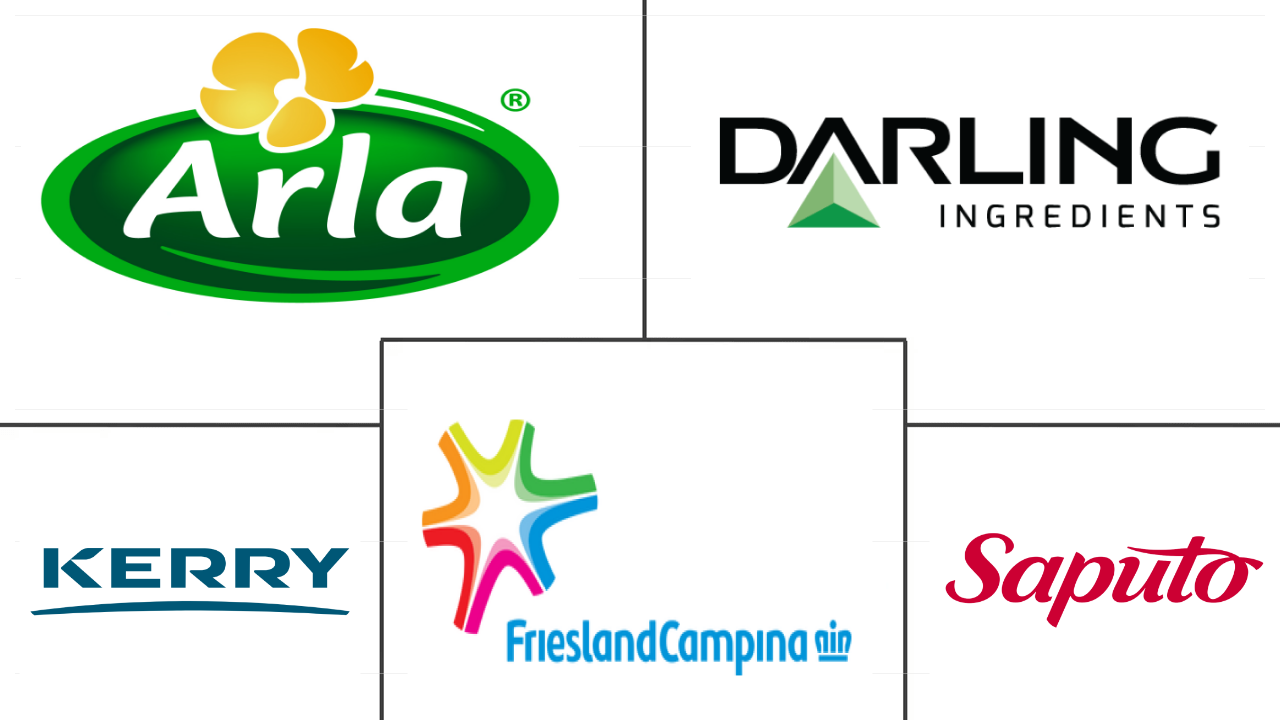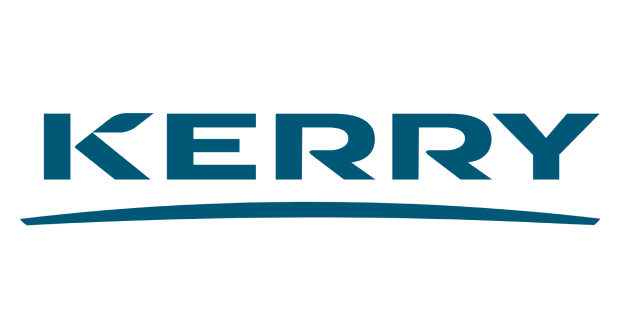Market Size of south america animal protein Industry
|
|
Study Period | 2017 - 2029 |
|
|
Market Size (2024) | USD 596 Million |
|
|
Market Size (2029) | USD 734.6 Million |
|
|
Largest Share by End User | Food and Beverages |
|
|
CAGR (2024 - 2029) | 4.27 % |
|
|
Largest Share by Country | Brazil |
Major Players |
||

|
||
|
*Disclaimer: Major Players sorted in no particular order |
South America Animal Protein Market Analysis
The South America Animal Protein Market size is estimated at 596 million USD in 2024, and is expected to reach 734.6 million USD by 2029, growing at a CAGR of 4.27% during the forecast period (2024-2029).
596 Million
Market Size in 2024 (USD)
734.6 Million
Market Size in 2029 (USD)
3.82 %
CAGR (2017-2023)
4.27 %
CAGR (2024-2029)
Largest Market by Product Type
25.69 %
value share, Casein and Caseinates, 2023
Casein and caseinates are the top picks due to their high protein content, slow digestion, and excellent water solubility, keeping the consumers satisfied for longer.
Largest Market by End User
77.18 %
value share, Food and Beverages, 2023
Consumer preferences for health-oriented, protein-based food and drinks, coupled with the functionalities of animal proteins, contributed to the growth of the F&B segment.
Fastest Growing Market by Product Type
5.82 %
Projected CAGR, Collagen, 2024-2029
Collagen is anticipated to grow the fastest as more people become aware of its ability to improve digestion, build lean muscle mass, boost immunity, and treat joint pain.
Fastest Growing Market by End User
6.77 %
Projected CAGR, Personal Care and Cosmetics, 2024-2029
The demand for natural ingredients and protein-enriched skin, body, and hair care products is driving the segment. Thus, the segment is projected to attain the fastest growth.
Leading Market Player
6.02 %
market share, Kerry Group plc, 2021

Kerry provides high quality protein ingredients with excellent nutritional and functional properties from various sources and optimised for a wide range of uses, thus cementing their position in the market.
Prominent application based on functionality and suitability with growing demand protein-enriched products drive the food and beverages sector
- By end-user, the F&B industry is the leading application sector for animal protein in the region. The key sub-segments of the F&B segment are bakery and dairy/dairy alternatives, both of which accounted for more than 46% of the total volume in 2022. Gelatin remains the most used protein in the bakery sector as it adds protein and acts as a transparent gelling and thickening agent in baked goods.
- In addition to the F&B segment, the supplements segment had the highest application share, with 78% of the application dominated by the sports nutrition sub-segment in 2022, primarily due to rising obesity across the region. Argentina, whose 28.3% of the population is overweight, was the most obese country in South America in 2021. With 28% of its population obese, Chile ranks second. With 27.9%, Uruguay ranks third. However, the whey protein-enriched personal care sector is projected to register the highest CAGR value of 4.43% in (2023-2029), owing to its functionalities as a skin smoothening and hair conditioning agent.
- Dairy and dairy alternatives is another important segment for animal proteins in the region, and it recorded a CAGR of 3.19% during the study period. The rise in sales comes with the usage of casein as a coagulant in cheese manufacture, along with the ongoing trend of protein fortification in the dairy desserts category. Manufacturers of products like ice creams and yogurts have launched protein-enriched versions of their existing products to make the "high protein" and "added protein" claims. As a result, after casein and caseinates (which has application in the cheese industry), whey protein and milk protein were the most used animal proteins in the segment. These proteins are also added to improve mouthfeel, viscosity, and structure.
Brazil followed by Rest of South America with increasing involvement in fitness and sports activities lead the segmental growth
- By country, Brazil claimed the largest share in 2022, with the animal protein demand from the F&B and supplements sectors dominating the sales. This high demand can be attributed to the country's aging population, which is estimated to triple by 2050, covering around 66 million Brazilians. In line with growing concerns, consumers are increasingly getting involved in fitness and sports activities, increasing the proportion of the non-athletic population among supplement consumers. As a result, Brazil is expected to record the fastest growth potential among all South American countries, with a CAGR of 6.72% during the forecast period.
- The dairy industry in the region is very well developed, so milk production is very high in South American countries. Brazil and Argentina are the major milk-producing countries in the continent. Chile and Uruguay are also emerging as major milk-producing countries. Therefore, the region always has a consistent supply of raw materials for dairy protein production. Dairy and dairy alternatives and bakery were the largest end-user segments for animal proteins in the region, representing over 46% of the total volume in 2022.
- Food and beverage was the largest end-user segment, with over 73.5% of the total volume of animal protein sales in the region. The majority of the sales in the segment come from the dairy and dairy alternatives sub-segment, which recorded a CAGR of 3.19% during the study period. South America produced 66.412 million ton of calf milk in 2020, which provided a sizable amount of the raw materials used to make dairy proteins. Due to the region's extensive milk production, key players like Arla and Fonterra have established dairy ingredient production plants.
South America Animal Protein Industry Segmentation
Casein and Caseinates, Collagen, Egg Protein, Gelatin, Insect Protein, Milk Protein, Whey Protein are covered as segments by Protein Type. Animal Feed, Food and Beverages, Personal Care and Cosmetics, Supplements are covered as segments by End User. Argentina, Brazil are covered as segments by Country.
- By end-user, the F&B industry is the leading application sector for animal protein in the region. The key sub-segments of the F&B segment are bakery and dairy/dairy alternatives, both of which accounted for more than 46% of the total volume in 2022. Gelatin remains the most used protein in the bakery sector as it adds protein and acts as a transparent gelling and thickening agent in baked goods.
- In addition to the F&B segment, the supplements segment had the highest application share, with 78% of the application dominated by the sports nutrition sub-segment in 2022, primarily due to rising obesity across the region. Argentina, whose 28.3% of the population is overweight, was the most obese country in South America in 2021. With 28% of its population obese, Chile ranks second. With 27.9%, Uruguay ranks third. However, the whey protein-enriched personal care sector is projected to register the highest CAGR value of 4.43% in (2023-2029), owing to its functionalities as a skin smoothening and hair conditioning agent.
- Dairy and dairy alternatives is another important segment for animal proteins in the region, and it recorded a CAGR of 3.19% during the study period. The rise in sales comes with the usage of casein as a coagulant in cheese manufacture, along with the ongoing trend of protein fortification in the dairy desserts category. Manufacturers of products like ice creams and yogurts have launched protein-enriched versions of their existing products to make the "high protein" and "added protein" claims. As a result, after casein and caseinates (which has application in the cheese industry), whey protein and milk protein were the most used animal proteins in the segment. These proteins are also added to improve mouthfeel, viscosity, and structure.
| Protein Type | |
| Casein and Caseinates | |
| Collagen | |
| Egg Protein | |
| Gelatin | |
| Insect Protein | |
| Milk Protein | |
| Whey Protein | |
| Other Animal Protein |
| End User | ||||||||||||
| Animal Feed | ||||||||||||
| ||||||||||||
| Personal Care and Cosmetics | ||||||||||||
|
| Country | |
| Argentina | |
| Brazil | |
| Rest of South America |
South America Animal Protein Market Size Summary
The South America Animal Protein Market is experiencing a steady expansion, driven by the increasing demand in the food and beverage industry, particularly in the bakery and dairy sectors. The region's robust dairy industry, with Brazil and Argentina as major milk producers, ensures a consistent supply of raw materials for dairy protein production. The market is characterized by a significant focus on protein fortification in products like ice creams and yogurts, which are enriched with whey and milk proteins to enhance texture and nutritional value. Additionally, the supplements sector, especially sports nutrition, is gaining traction due to rising health consciousness and obesity concerns in countries like Argentina, Chile, and Uruguay. The market is also witnessing growth in the personal care segment, with whey protein being utilized for its skin and hair benefits.
Brazil stands out as a key player in the region, with a rapidly aging population and increasing consumer interest in health and wellness products, driving the demand for animal-based dietary supplements. The market is fragmented, with major companies like Arla Foods, Darling Ingredients, Kerry Group, Royal FrieslandCampina, and Saputo Inc. holding a significant share. These companies are actively investing in product development and strategic acquisitions to strengthen their market presence. The introduction of innovative products, such as marine collagen peptides, highlights the ongoing trend towards natural and organic ingredients. Despite economic challenges, the market's growth is supported by a growing awareness of the health benefits of animal proteins and a shift towards functional and fortified foods.
South America Animal Protein Market Size - Table of Contents
-
1. MARKET SEGMENTATION (includes market size in Value in USD and Volume, Forecasts up to 2029 and analysis of growth prospects)
-
1.1 Protein Type
-
1.1.1 Casein and Caseinates
-
1.1.2 Collagen
-
1.1.3 Egg Protein
-
1.1.4 Gelatin
-
1.1.5 Insect Protein
-
1.1.6 Milk Protein
-
1.1.7 Whey Protein
-
1.1.8 Other Animal Protein
-
-
1.2 End User
-
1.2.1 Animal Feed
-
1.2.2 Food and Beverages
-
1.2.2.1 By Sub End User
-
1.2.2.1.1 Bakery
-
1.2.2.1.2 Beverages
-
1.2.2.1.3 Breakfast Cereals
-
1.2.2.1.4 Condiments/Sauces
-
1.2.2.1.5 Confectionery
-
1.2.2.1.6 Dairy and Dairy Alternative Products
-
1.2.2.1.7 RTE/RTC Food Products
-
1.2.2.1.8 Snacks
-
-
-
1.2.3 Personal Care and Cosmetics
-
1.2.4 Supplements
-
1.2.4.1 By Sub End User
-
1.2.4.1.1 Baby Food and Infant Formula
-
1.2.4.1.2 Elderly Nutrition and Medical Nutrition
-
1.2.4.1.3 Sport/Performance Nutrition
-
-
-
-
1.3 Country
-
1.3.1 Argentina
-
1.3.2 Brazil
-
1.3.3 Rest of South America
-
-
South America Animal Protein Market Size FAQs
How big is the South America Animal Protein Market?
The South America Animal Protein Market size is expected to reach USD 596.05 million in 2024 and grow at a CAGR of 4.27% to reach USD 734.58 million by 2029.
What is the current South America Animal Protein Market size?
In 2024, the South America Animal Protein Market size is expected to reach USD 596.05 million.

